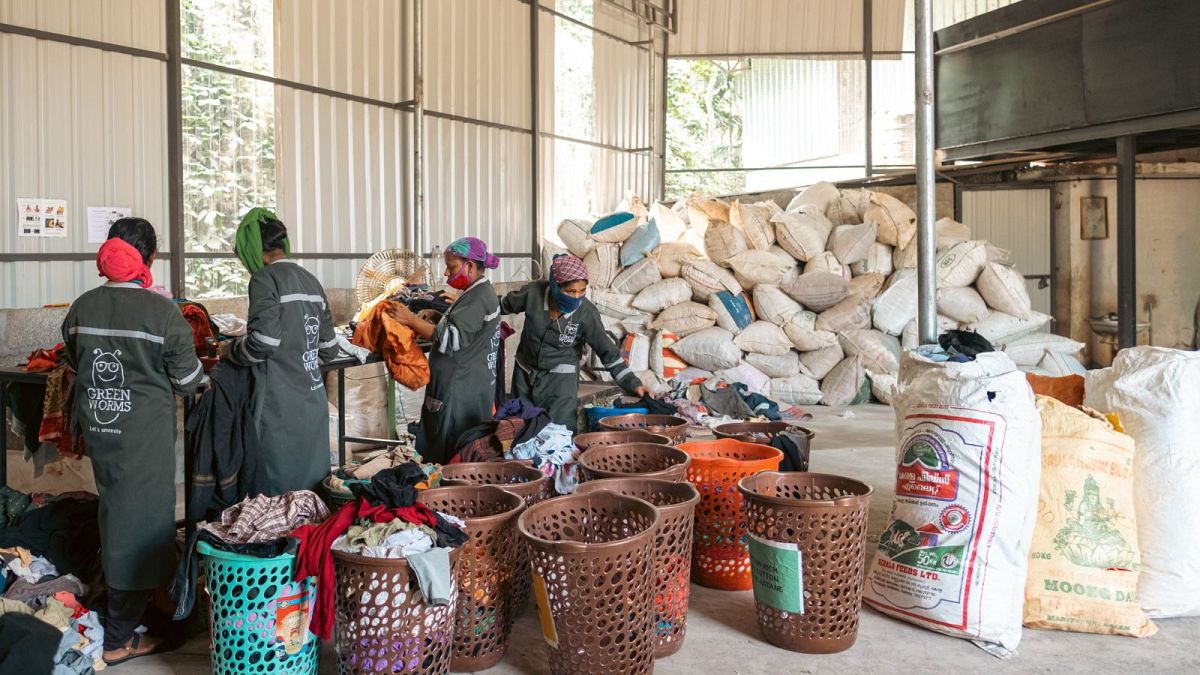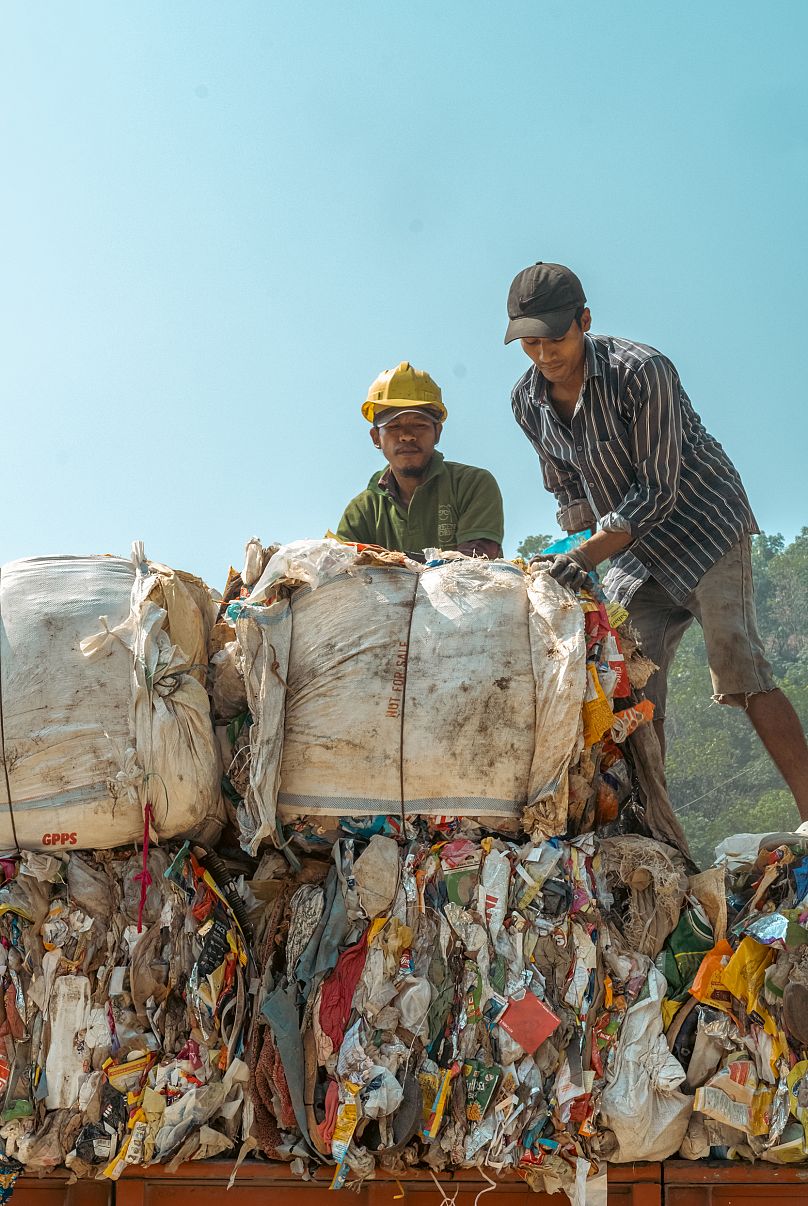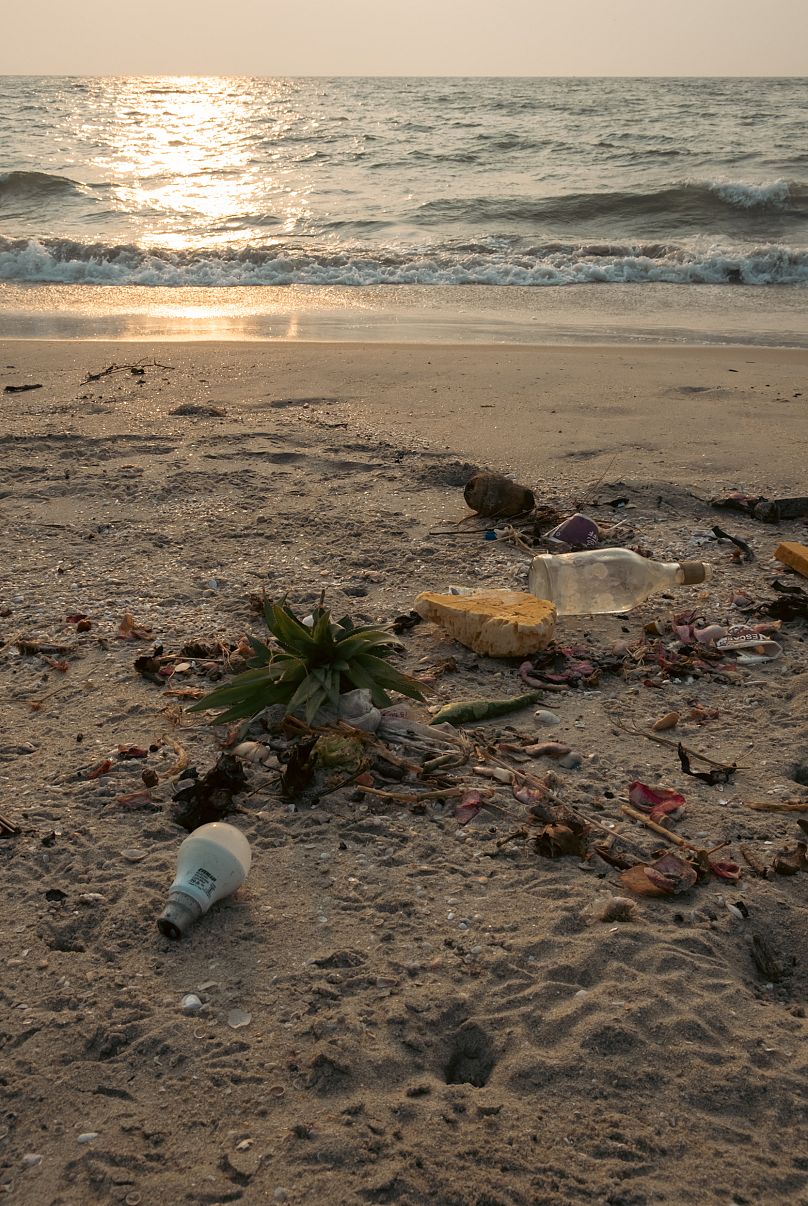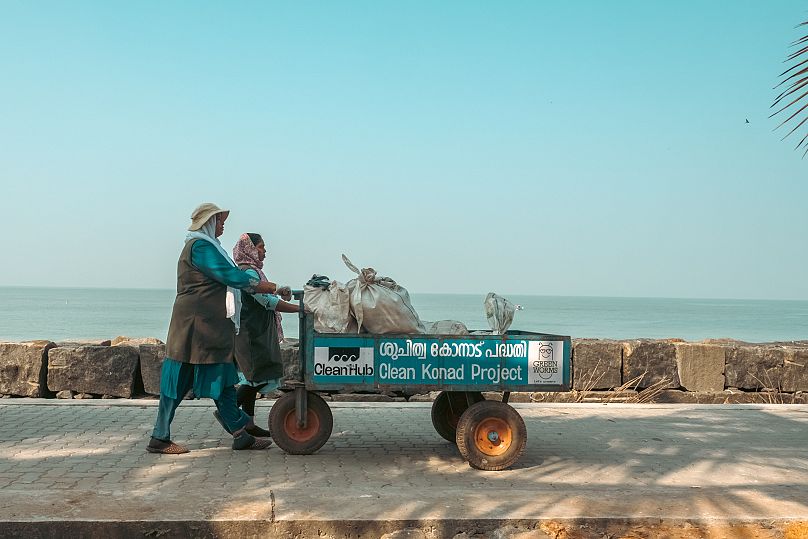Plastic credits help to clear plastic pollution from our oceans, but experts warn they could also lead to greenwashing.
The battle against plastic pollution reached a landmark point in June, when more than 170 countries agreed to create a first draft of an international treaty that will control the flow of plastics.
With the UN’s international plastics treaty entering its third round of discussions this month, talk is now turning to precisely how participating nations will tackle the ubiquitous material.
Despite growing public awareness, 11 million tonnes of plastic enter our oceans each year - almost twice the weight of the largest Egyptian pyramid, the Great Pyramid of Giza. An estimated 75 to 199 million tonnes of plastic have already reached these marine environments, according to the UN Environment Programme.
Removing this much plastic from the environment will be a monumental task, which could require a combination of public and private sources to raise the necessary funds.
One potential solution emerging from the private sector is plastic credits. By harnessing money invested by companies into waste collection projects, plastic credits help to fund waste management infrastructure in underserviced areas.
But some remain sceptical of plastic credits, particularly given their use of the controversial offsetting model seen in the carbon credits market.
How do plastic credits work?
To understand plastic credits, we first have to think of waste in terms of value.
“Some items of waste, if you have enough of them, turn into a resource,” says Joel Tasche, CEO of Cleanhub, a start-up that facilitates waste collection around the world with investment from businesses.
“Plastic bottles which are made of PET, you can turn that into a t-shirt or new bottles, so it is a product you can sell.”
But some waste cannot be recycled, which means that collecting and processing it costs more than it could ever make back.
“A perfect example of ‘low value plastics’ is a crisps bag,” says Tasche. “It's easy to recognise low value plastic because it's always a compound material - you have plastic and aluminium, for example.”
Low value plastic pollution still needs to be collected, but that requires someone to foot the bill.
“In countries like Germany and the UK, this is mostly financed by tax money,” says Tasche, “but globally, this is not available to 2 billion people.”
Cleanhub dispenses plastic credits tied to projects in remote communities, like the Andaman Islands in the Indian Ocean, where longer, more expensive logistics chains hamper waste collection.
Companies are encouraged to measure how much plastic waste their operations generate, then purchase plastic credits that pay for an equivalent amount to be removed from the environment.
Are plastic credits the same as carbon offsetting?
One advantage plastic credits have over carbon credits is the type of waste that is captured.
“The big difference between plastic and CO2 is one is solid and one is in gas form,” says Tasche. “It's very difficult to prove that one tonne of carbon emissions was actually removed, where with plastic waste you gather physical goods that you can put on a scale.”
But the idea of offsetting will ring alarm bells for those who have witnessed greenwashing in the carbon credits market.
The WWF warns that plastic credits could encourage business-as-usual practices, where companies claim to be “plastic neutral” without reducing plastic in their supply chains.
Christina Jäger, co-founder of the environmental consultancy Yunus, questions whether “plastic neutrality” is even achievable.
“If we're talking about big players, it will be impossible for them to completely offset that through plastic credits, because there wouldn't be enough players on the market who could absorb that,” she says.
Plastic neutrality also disregards the legacy waste already polluting the environment. “You need to look into your entire history.”
Jäger notes the complexity of measuring plastic offsetting’s impact; whereas one tonne of CO2 is understood to have the same consequence the world over, plastic pollution’s effects are localised.
It would be counterproductive for a company to invest in waste collection in one area if their activities create plastic pollution elsewhere.
Because of this, says Jäger, the resemblance between plastic and carbon credits is a misnomer.
“The carbon market and plastic-based market are two completely different things,” she says. “That's one core issue, that it’s often taken for granted that they will function the same way.”
How could plastic credits be regulated?
By putting a price on low value waste, plastic credits could put money in the hands of waste pickers on the plastic crisis’s frontline.
“A plastic credit is valued to, let's say, one tonne of plastic waste, and by that it gets an artificial value high enough that an entrepreneur on the ground sees the value in collecting that waste,” Tasche explains.
The problem, according to Jäger, is that plastic credits are currently unregulated with no global standard for what one credit equates to, whether it’s one plastic bag or one tonne of plastic.
The bodies that decide that value are often the ones issuing credits. “These need to be separate roles. You need to have third party auditors,” she says.
Yet too much regulation could harm the very workers that plastic credits purport to help.
90 per cent of waste pickers globally work in the informal sector, “meaning there is no working contract or business registration where they might be paying taxes, so these people work for themselves,” Jäger explains. “Most of them are threatened by poverty - in some cases, extreme poverty.”
If plastic credit distributors were to insist on formal employment arrangements - which would allow them to monitor working conditions - this could shut out the bulk of that workforce.
Particularly vulnerable to stringent regulation, according to one Yunus report, are “first-mile” waste collectors, who sell waste on to other waste pickers or scrap shops.
“If you're putting, as part of plastic credits, formal agreements, certificates or standards that need to be mapped, because they would never be part of such a scheme, they will never fulfil those due diligence requirements,” says Jäger. “That's the challenge you have. On the one hand, you need regulation, but this might lead to excluding them.”
Disposing of low value plastics
With no way to recycle low value plastic, companies are faced with two options - landfills or burning it for fuel.
“It's choosing the lesser evil,” says Tasche. “In our opinion, the lesser evil is using it to produce energy.”
For Cleanhub, the cement industry has become an unlikely partner. With kilns burning at at least 900°C, they make an ideal incinerator.
“It might sound counterintuitive, but the positive thing about working with the cement industry is you're replacing an existing fuel type,” says Tasche. “You're replacing coal, which has a higher emission factor per gigajoule than plastic.”
Such high temperatures reduce the cancerous toxins that plastic releases if it is allowed to burn in open landfills. “You still produce CO2, there's no secret around that,” says Tasche. “But you don't have toxic ashes.”
It’s an imperfect solution, Tasche is the first to admit, which could be solved by innovation - though the priority, he says, should be redesigning packaging materials.
A blueprint for waste collection
As a relatively new market, the impact that plastic credits have is still limited. “We’ve collected around 6,000 pounds (2,727 kg) of plastic waste,” says Tasche, “which compared to global plastic production is nothing. It's a drop in the ocean.”
A useful way to think of plastic credits, then, is as a proof of concept. “We can provide waste management to coastal communities with 13,000 households. This kind of change is possible,” he continues. “It serves as a blueprint to scale things up.”
“Only if it follows the same logic as extended producer responsibility, then yes, it can be a blueprint,” says Jäger. “I'm only seeing them as a short to mid-term solution if they are regulated.”
Extended producer responsibility (EPR) is a policy that shifts responsibility for a product’s end of life from consumers and waste collectors to its manufacturer.
Just 20 businesses are responsible for 55 per cent of the world’s plastic production, including the oil and gas company Exxon Mobil and plastic packaging producer Dow. Under EPR, those companies would be responsible for that plastic’s entire lifespan, including its disposal.
But, Jäger cautions, cost-averse companies are unlikely to shoulder that responsibility of their own volition. “In any voluntary system, everyone's trying to get away with the least costs possible,” she says. “If this is being driven by the private sector, it is driven by the polluter. This needs to be driven by someone who has a neutral standing.”
Even with regulation, plastic credits alone cannot overhaul the waste crisis. “The first priority is to limit plastic production,” says Jäger. “We need to drastically move away from single-use to new business models that enforce repair, reuse, refurbishment, remanufacturing.”
“Compensation alone is not the answer,” Tasche agrees. “We need to get to the tipping point where on an annual basis we collect more plastic than what is put into the market.”
Ultimately, says Tasche, plastic credits are not a “silver bullet”, but one fundraising stream that complements plastic removal.
“Whether that money comes from the government, a mandatory system or a voluntary plastic credit system, the important thing is that money comes into the system, that plastic collection can happen.”






